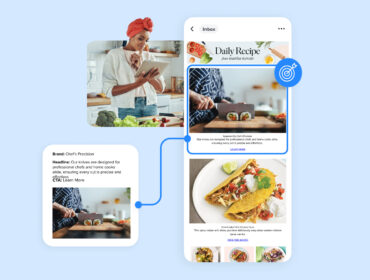Customer pulse survey: How COVID-19 has affected publishers this summer
Publishers have spent the past several months shifting their strategies in response to COVID-19. While they’ve enjoyed a major increase in traffic, they’ve also had to rebound from decreased ad revenue and unexpected changes in consumer interests and behaviors.
So we launched a July survey to better understand the impact of COVID-19 on publishers.
Here are some key trends that we discovered.

An increase in reader engagement
Unsurprisingly, housebound consumers make engaged readers, since they have more time to enjoy their favorite content. As the global crisis continued to unfold, people also craved information about how to stay healthy and productive in isolation – and publishers were able to deliver.
As people started spending more time at home, 84% of publishers reported an increase in reader engagement with their content.
- 59% of these publishers believe that the content they typically produce is more relevant during this time, inspiring the rise in engagement.
- Based on responses, we saw that publishers producing content in the News and Hobbies & Interests categories have seen the most overall increase in engagement across various channels, including email, website, social media, and mobile apps.

A boost for website and email engagement
Not all marketing channels were affected equally. Certain channels, such as website and email content, saw the biggest growth in engagement. Many publishers even created dedicated verticals and email newsletters just for COVID-19 content, providing readers with direct access to timely information.
Publishers saw the highest increase in engagement with their website and email newsletters.
- 65% of publishers reported an increase in engagement with their websites during COVID-19, making websites a leading channel in terms of reader engagement.
- Email came in just after websites, with 53% of publishers experiencing an increase in engagement with their email newsletters.

Changes in revenue across formats
While ad-generated revenue has dipped since the COVID-19 outbreak, opportunities to generate subscriptions, memberships, and sponsored content are on the rise.
Almost 50% of publishers saw an increase in revenue from subscriptions and memberships and 38% of publishers saw an increase in revenue from sponsored content.
49% of publishers have experienced an overall decrease in ad-generated revenue.
Because advertisers were pausing/canceling campaigns during this time:
- 59% of publishers reported a decrease in ad revenue from direct-sold channels.
- 47% of publishers have seen a decrease in ad revenue from programmatic demand.

A shift in marketing strategies
Smart publishers follow their audiences. So since readers are subscribing and signing up for memberships, publishers are doing everything they can to ride this wave of engagement and build their audiences.
As mentioned above, 84% of publishers are seeing a boost in engagement and 50% of publishers have seen an increase in subscriptions and memberships. To further highlight this, a Digiday article by Kayleigh Barber states that readers’ propensity to subscribe has tripled alongside the surge in traffic and engagement during COVID-19.
We also noticed that publishers are investing more of their advertising dollars towards subscriber and membership acquisition as a goal.
71% of publishers are leveraging their email newsletters to achieve this goal after seeing a rise in engagement across their email channels.

New opportunities for the future
Looking past COVID-19, publishers are exploring various strategies to ensure they can survive further changes in the market and retain those new audiences of subscribers.
Here’s how:
65% of publishers are exploring different ways to prepare for the shift away from third-party cookies.
47% of publishers are interested in establishing new programmatic partnerships.
35% of publishers are looking to explore new content sponsorship opportunities for advertisers in the near future.
29% of publishers are interested in creating proprietary audience and inventory packages for advertisers built with the publisher’s own first-party data.


